Barely a decade passed since the UK’s winter of discontent brought the country to a halt when the country stood at the precipice of another tumultuous descent into chaos. The Miners’ strike that started in 1984 was the biggest and most destructive industrial action the end of which shattered communities and gave the Conservative government the ammunition to end the hold of the country’s trade unions. Forty years on those who witnessed the clash between miners and the state reflect on the turmoil that erupted and its aftermath. ‘ONE YEAR! PHOTOGRAPHS FROM THE MINERS’ STRIKE 1984-85′ an exhibition hosted by the Martin Parr Foundation in Bristol tells the stories through a series of images, posters, and other assorted memorabilia.
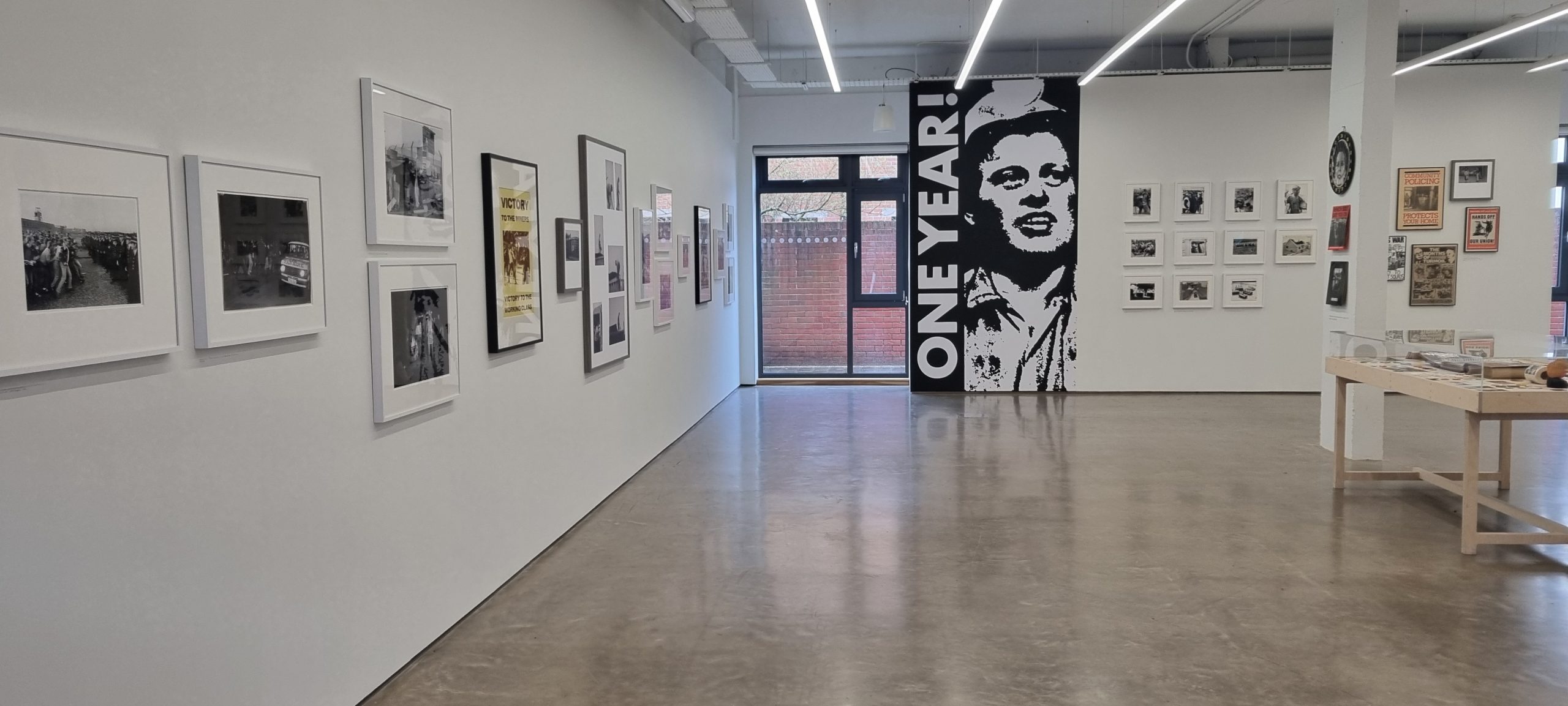
A BRIEF HISTORY OF THE STRIKE
When the UK Conservative government won the 1979 election with Margaret Thatcher as the party leader ergo Prime Minister, the newly elected government had a plan: to consolidate their economic plan that included privatizing the country’s national industries. There was just one obstacle: the trade unions. Industrial action through the 1970’s brought the country to a standstill and the mood of the public was to avoid another ‘winter of discontent.A standoff ensured between the National Coal Board (NCB) and the National Union of Miners, as colliers continued to close resulting in the loss of 41,000 jobs between March 1981 and March 1984. The NUM called a ballot of its members for national strikes in January 1982, October 1982 and March 1983 over pit closures and restrained wages. Each ballot fell short of the required 55% majority and so the NUM instituted an overtime ban in November 1983, which remained place until the national strike in March 1984.On 4th March 1984 the NUM called for strike action, though no ballot was held. The response resulted in the first main strike taking place on 6th March 1984 at the Cottonwood Colliery. A national strike was then called on 12th March, and work quickly stopped in coal mining towns across the country.
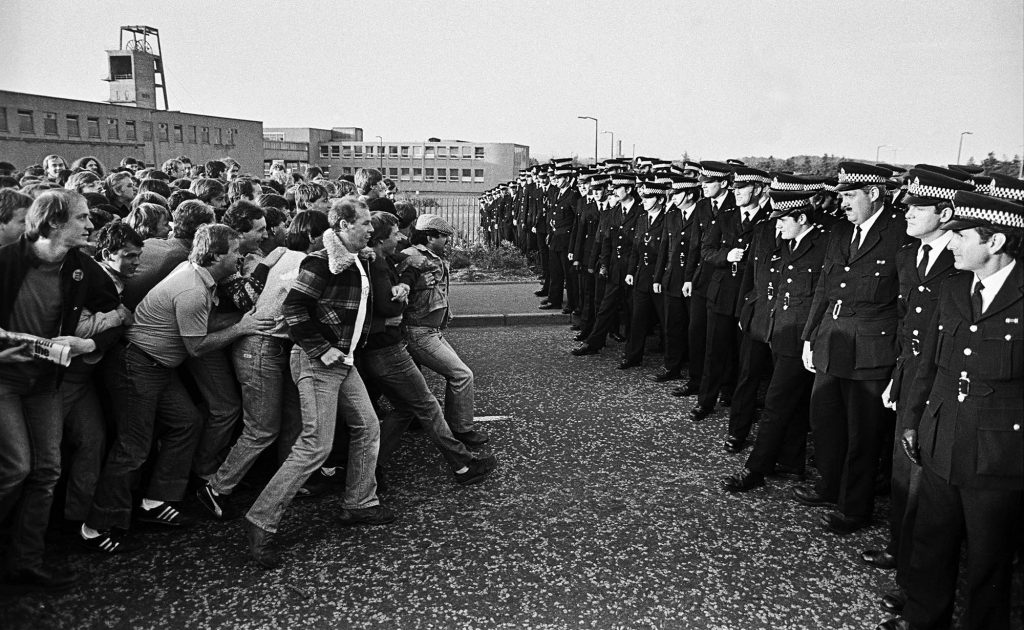
For the next year, workers and police violently clashed and the country came to a standstill as the government, the NCB and other unions worked towards a resolution. Thatcher however had a tactic so meticulous it was almost as if the situation was engineered in her favour. It started with the stock piling of coal that would see the country’s energised comfortably met. The police were employed to break up any pickets and protect workers returning to the mines. Their silver bullet however was the NUM’s decision not to hold a ballot. They argued that previous ballots gave the authority for the strike action, which was challenged in the High Court. In September 1984 the Court ruled the strike illegal marking the beginning of the end for the NUM. Support for the strike waned significantly amongst the workers as well as a despondent weary public. The strikes ended in March 1985 and the Thatcher government was able to carry out its economic plan. The result was mass job losses following the pit closures, the industry being privatised, and mining regions left in adverse poverty. with the number of arrests totalling 11,291 with 8,392 charged, 6 people dead and thousands of sustained injuries. It remains the most bitter industrial dispute in UK history.
PICTURES TELLING THOUSANDS OF WORDS
As you walk through the doors of the Martin Parr Foundation to the left past the welcome notice, the first two pictures that greet you are most telling and symbolic of the strike action: the standoff between the police and pickets in John Sturrock’s blistering image of Norman Strike confronting police lines at the front of mass protest in Bliston Glen Scotland, and Roger Tiley’s ‘Scabs Returning to Work’ image captured in Newbridge, show the fierceness of the battles and the absolutism non-striking miners from their brethren. Following the trail of black and white images the numerous complex stories reveal themselves, expressing their different goals: those worried about their livelihoods echo the sentiment ‘Coal not Dole’ whilst others aim for a much broader outcome as one poster shouts proudly ‘Victory to the Miners, Victory to the Working Class.’
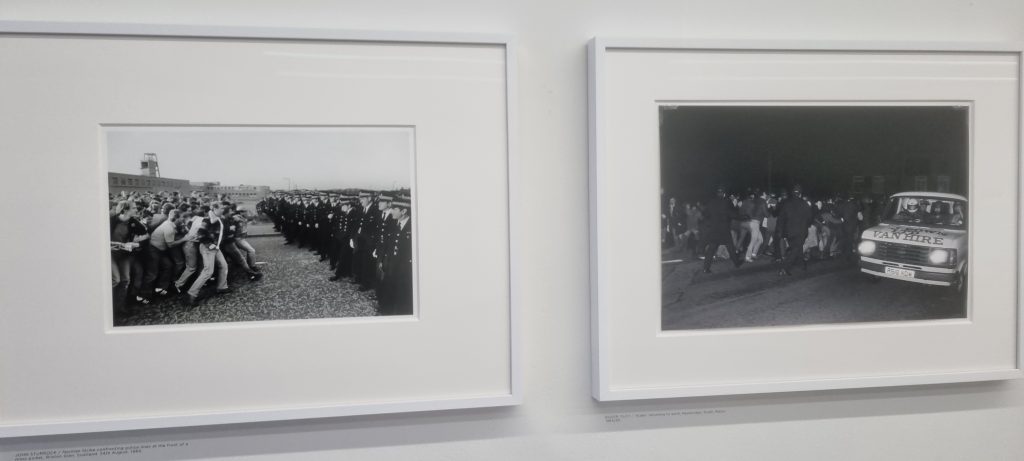
Violent clashes formed much of the exhibition but to focus on that alone only tells part of the story. In amongst the clashes are happy images of families coming together to celebrate Christmas despite their futures remaining bleak and uncertain. Brenda Prince captured the touching image of a retired pit worker holding the first ‘strike’ baby, and a joyous wedding party. It also shows the level support from all communities the strikers enjoyed: the photo of the Women’s Picket in Nottinghamshire (also by Brenda Prince) taking the night shift, and the Lesbian and Gays marching out and proud in support of the strike action provide the antithesis to the one of violence and division, where communities come together for a common cause, celebrating unity and inspiring hope.
A BLEAK TALE OF A BLEAKER TIME
The exhibition, curated by Isaac Blease, doesn’t tell one story rather it tells many, from a desperate battle to save the livelihoods of an industry under threat, to a class war between the workers and the state. Using not only a wide variety of photographs, but also an array of posters, home photos, and assortment of ephemera, the exhibition tells the side of the story that mattered: the workers. It by no means paints a pretty picture especially of the Thatcher government on mission to destroy the trade unions, nor does it favour the NUM itself – one can’t help but appreciate the irony of the image of three union offices standing under the sign ‘NUM Official Picket’. The focus remained on the striking miners and their minority because ultimately they paid the price for the government’s nefarious scheming, and the NUM’s hubris.
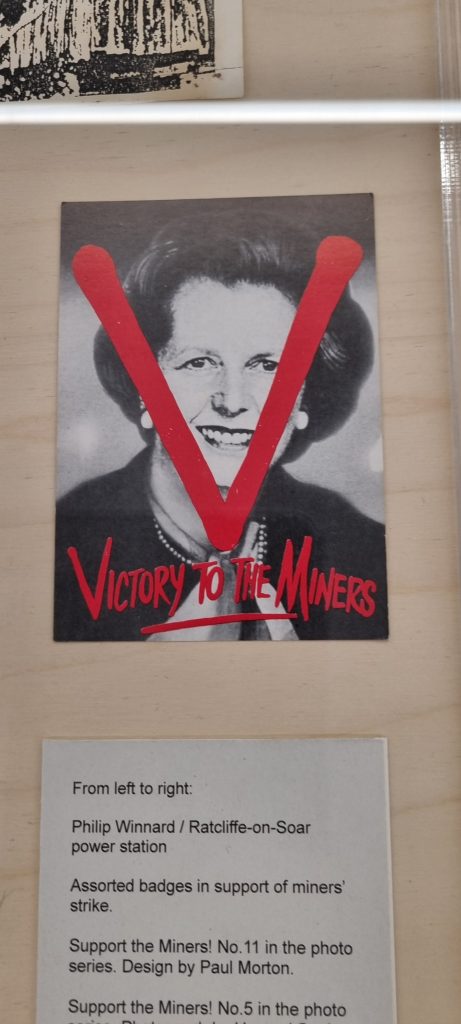
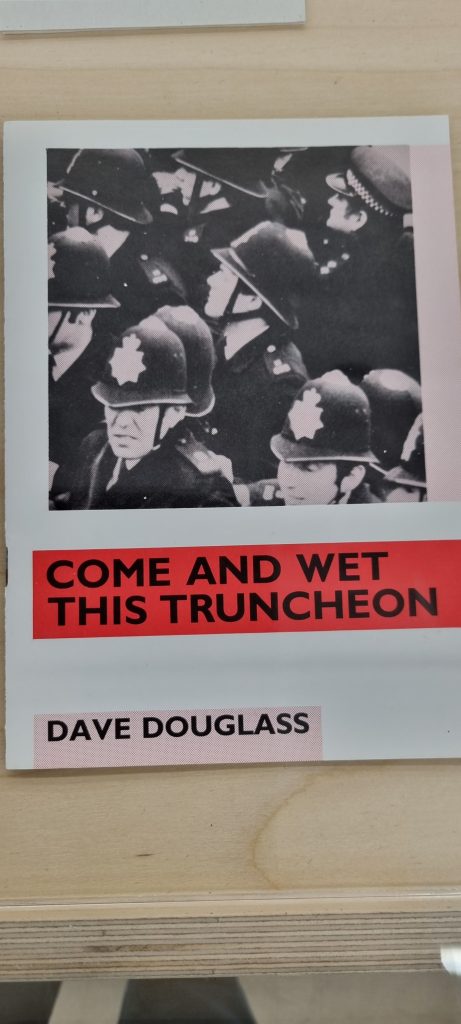
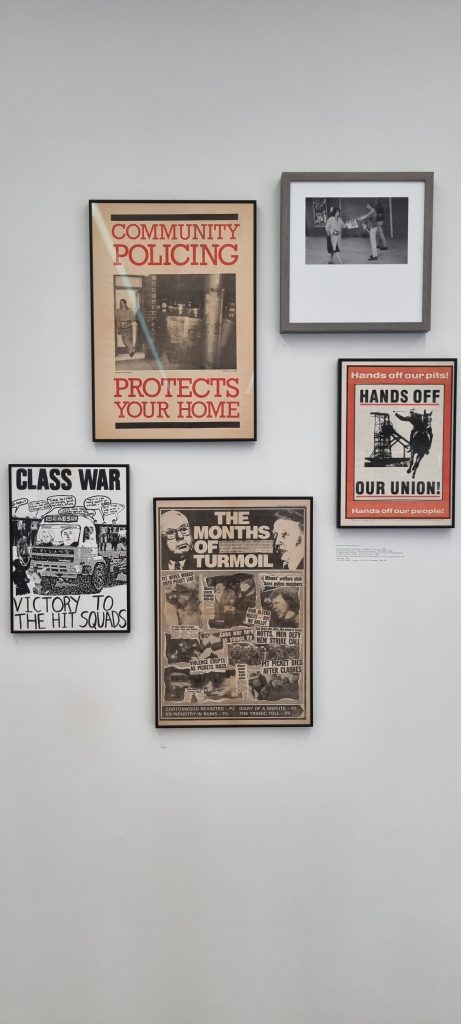
To see these the pictures of violent struggles, burned out cars and blood covered strikers is a reminder of how high the stakes were for both the workers and the state. For those who were there or witnessed the events play out in the news the exhibitions re-ignites the emotions felt at the time. For of workers fighting for better pay and work conditions, it’s a reminder of the importance of the fight no matter the outcome.
‘ONE YEAR! PHOTOGRAPHS FROM THE MINERS’ STRIKE 1984-85‘ will end on 31st March.